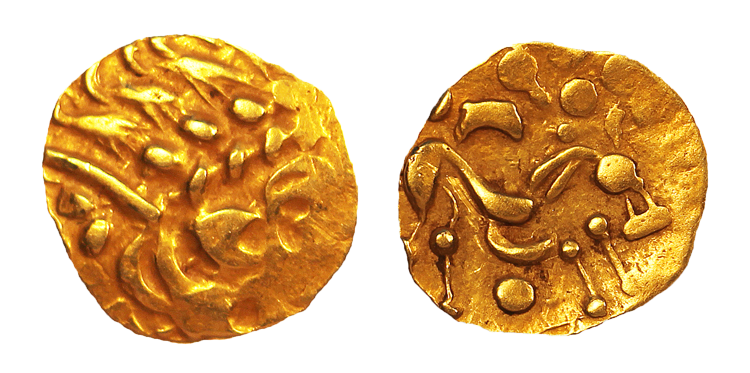
About Celtic Coinage of Britain
Celtic Coinage of Britain was first conceived as a printed book early in the 1980s. The appearance of many new varieties of Ancient British coins had rendered the 1975 edition of Mack's Coinage of Ancient Britain in need of revision.
By 1984, a large number of modern forgeries had been identified. Many of these had compromised the 1964 and 1975 editions of Mack's work and the need for a new reference catalogue became critical.
During summer of 1984, Robert Van Arsdell had come to agreement with Patrick Finn and Douglas Saville of Spink & Son Ltd. to produce the catalogue. The authors were to have been Van Arsdell and Lyn Sellwood. Work began immediately, but by the end of 1985 Lyn Sellwood was unfortunately unable to continue as a co-author. Spinks then agreed to go forward with Van Arsdell as the sole author. The finished book was published in the spring of 1989. Many people and institutions provided information for the book (see Acknowledgments), and nearly 500 years of numismatic study had been consulted (see Bibliography).
By 1997, the entire print run of Celtic Coinage of Britain had been sold. As used copies of the book became difficult to locate, the clamor for a new, revised edition grew. Two factors worked against writing one. First, the proliferation of modern forgeries had continued unabated, making the identification of new types treacherous. Second, an enormous outpouring of new research coupled with the computerization of the Celtic Coin Index at Oxford promised that many new insights into the coinage were forthcoming.
By 2009, the extensive publications of the prior two decades provided a basis for revising the 1989 edition of Celtic Coinage of Britain. In 2010 however, Liz Cottam, Philip de Jersey, John Sills and Chris Rudd had created their own catalogue called Ancient British Coins, or ABC for short. This book, with its superb illustrations, coupled with Chris Rudd's incomparable wit, proved to be an easy guide for identifying coins. This was Rudd's acknowledged goal, when he published it (Info).
Yet Celtic Coinage of Britain and Ancient British Coins are very different works. By 2011, a revised edition of Celtic Coinage of Britain was long overdue. Worse, people discussing the coins or, at times, even writing about them mentioned the book as if it were some mythological object no one had ever seen.
Evidently, the work needed a wider audience than an ink-on-paper production could ever afford. Thus, the production of a Second Edition was conceived as a website, one that anyone could use on the Internet – for free. The website was begun in 2012 and built out by the end of 2013. The entire site was designed, developed and coded by the author; entailing two years of work.
The Celtic Coinage of Britain website is now used by more than three thousand individual users every month. Most visitors to the site visit more than once a month. The work is now used by a greater number of people than could ever see a copy of the 1989 printed book.
The rise of hand held tablets and Smart Phones has changed the Internet beyond belief. Sometime after 2014, hand held devices accounted for more than half of all Internet inquiries – surpassing the use of desk and laptop computers, combined. The coding requirements for hand held devices are different than those used for ordinary computers. Though the second edition of Celtic Coinage of Britain worked on phones and tablets, it didn't work as well as one would have liked.
In 2015, it was decided to rewrite the entire code for the website. The content was also completely reviewed, with revisions made where needed – especially in the Rarity Estimates. The flexible cataloguing scheme built into the First Edition of the book greatly facilitated the entire revision process. It was possible to insert new types, and move others without having to redo the whole scheme. The increased use of links within the site enable visitors to see reference materials without finding books to read. The website was coded using Adobe Dreamweaver, HTML5 and CSS3 starting in mid-2016. The work was completed by the end of 2017.
